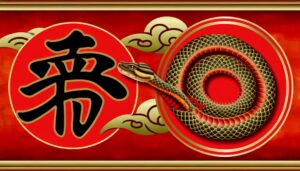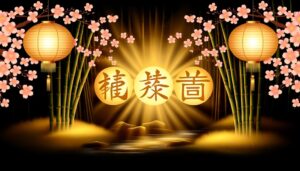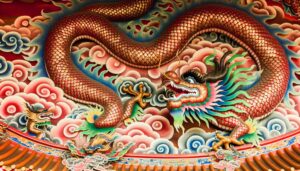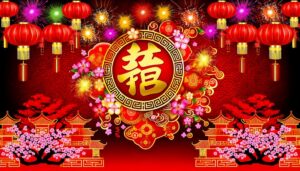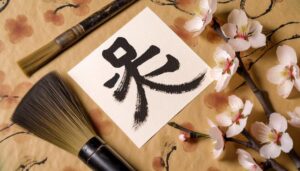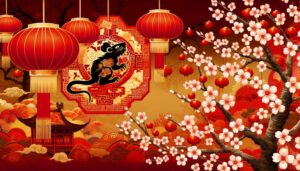Tranquility Chinese Symbol for Peace:合
The Chinese symbol for peace, represented by the character 合 (hé), holds deep cultural significance rooted in ancient Chinese philosophies such as Confucianism and Daoism. Originating during the Zhou Dynasty, this symbol embodies the ideals of balance and societal harmony.
Its components, which include a radical symbolizing grain and a component denoting mouth, highlight the intersection of agriculture and human sustenance in achieving peace. Frequently found in art, literature, and daily practices, 合 reflects a profound reverence for tranquility.
Exploring its applications in home décor, corporate logos, and mindfulness techniques can reveal its timeless relevance and depth.

Key Takeaways
- The Chinese symbol for peace, tranquility (河 – hé), emerged during the Zhou Dynasty.
- It embodies cultural values of harmony, balance, and societal equilibrium.
- The character reflects Confucian and Daoist emphasis on non-violence and unity.
- It is prevalent in art, literature, and home décor to symbolize peace.
- The symbol integrates elements representing agriculture’s role in fostering peace.
Origin and History
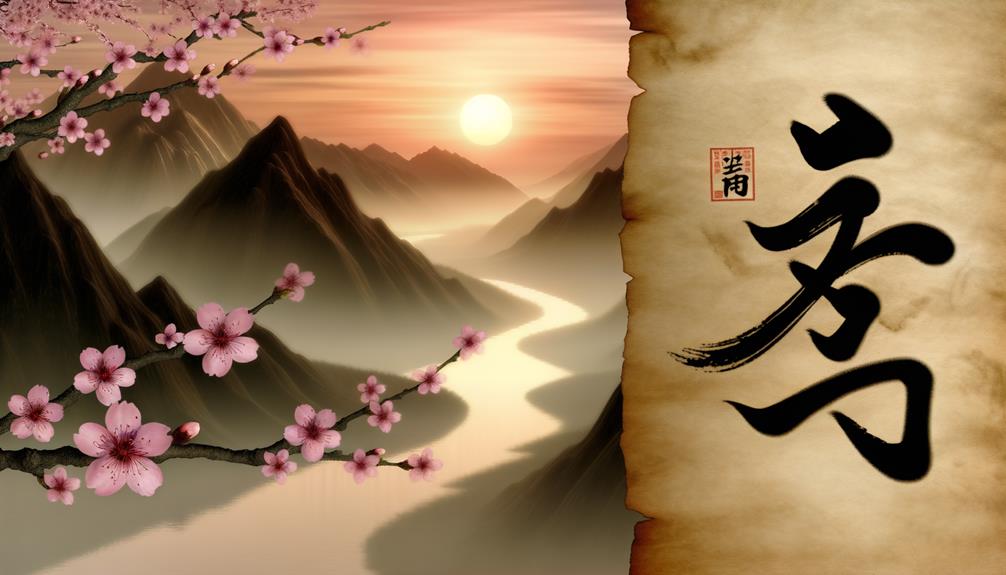
The Chinese symbol for peace, 和 (hé), has its origins in ancient Chinese civilization, where it was deeply intertwined with philosophical and cultural concepts of harmony and balance.
This character emerged during the Zhou Dynasty (1046-256 BCE), an era characterized by the flourishing of Confucian and Daoist thought. Both philosophies emphasized the importance of societal and cosmic equilibrium.
Inscriptions on bronze vessels and ancient texts reveal the early use of 和 in rituals and governance, symbolizing not only the absence of conflict but also the presence of harmonious coexistence. The character itself combines the radicals for ‘grain’ and ‘mouth,’ reflecting the idea that peace and harmony are sustained through mutual nourishment and shared resources.
Understanding its historical roots provides insight into its enduring significance.
Symbolic Meaning
The Chinese symbol for peace, 和 (hé), carries profound historical significance and embodies cultural values that permeate various aspects of Chinese society. Historically, it has been a cornerstone in philosophical texts and governance, symbolizing harmony and balance.
In contemporary usage, it remains integral to social rituals and expressions, reflecting a deep-seated reverence for tranquility and unity within the community.
Historical Significance Explored
Rooted in millennia of cultural and philosophical evolution, the Chinese symbol for peace embodies profound layers of historical and spiritual significance. Tracing its origins to ancient Chinese civilization, this symbol is deeply intertwined with the teachings of Confucianism, Daoism, and Buddhism.
It encapsulates ideals of harmony, balance, and societal order, reflecting the collective aspiration for a tranquil existence. During the Zhou Dynasty, it was associated with the concept of ‘He,’ denoting harmony and unity.
Throughout history, it has been a powerful emblem in calligraphy and art, serving as a constant reminder of the enduring quest for inner and outer peace. Its continued reverence underscores its timeless relevance in promoting universal values of concord and serenity.
Cultural Context and Usage
Extending beyond its historical significance, the Chinese symbol for peace plays an integral role in contemporary cultural expressions, embodying ideals that resonate profoundly within various facets of daily life and artistic practices. This symbol is not merely an ancient relic but a living emblem that permeates modern Chinese culture with layers of meaning and relevance.
- Art and Calligraphy: Frequently featured in traditional and modern artworks, emphasizing harmony and tranquility.
- Fashion: Incorporated into clothing designs, symbolizing a peaceful disposition and aesthetic elegance.
- Home Décor: Utilized in interior design to create serene and harmonious living spaces.
- Literature and Poetry: Employed as a metaphor for societal harmony and individual inner peace.
- Martial Arts: Represents the philosophical underpinnings of balance and non-violence.
Cultural Significance
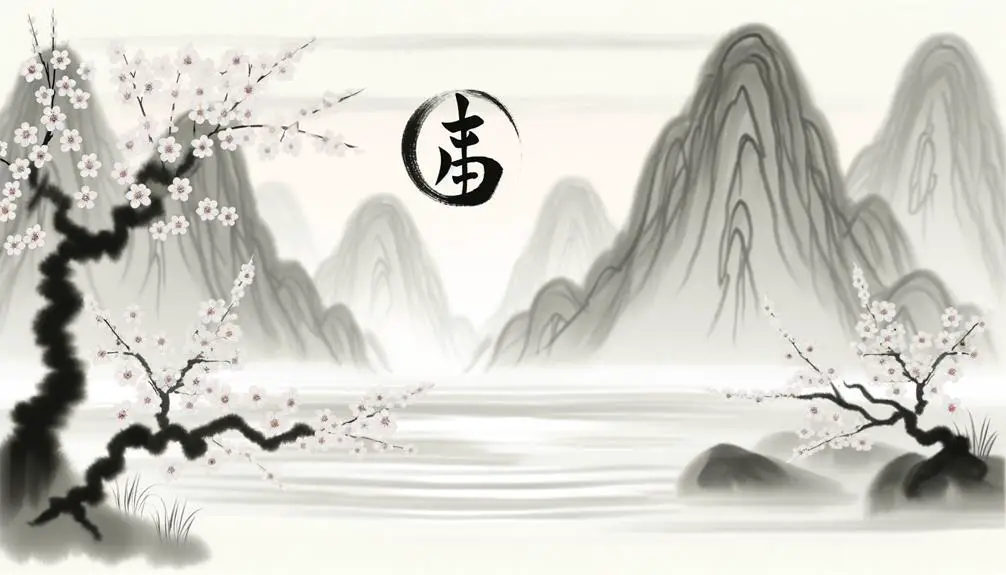
In Chinese culture, the symbol for peace, 和 (hé), embodies a profound philosophical and historical significance that permeates various aspects of daily life and societal values.
Rooted in Confucianism and Daoism, 和 signifies not only the absence of conflict but also the harmonious balance between individuals and their environment. Historically, it has been a cornerstone in governance, promoting social harmony and moral integrity.
In familial and community settings, 和 underscores the importance of unity, mutual respect, and collective well-being. The symbol acts as a guiding principle, encouraging individuals to cultivate inner peace and contribute to societal harmony.
Its pervasive influence underscores the deep-seated cultural emphasis on equilibrium and harmony, extending beyond mere tranquility to encompass broader ethical and social dimensions.
Elements of the Character
Understanding the elements that comprise the Chinese character 和 (hé) reveals deeper layers of its philosophical and cultural significance. The character consists of two main components, each carrying specific meanings that contribute to the whole.
- Radical 禾 (hé): Symbolizing grain or crops, it represents sustenance and the fundamentals of life.
- Component 口 (kǒu): Denoting mouth, it underscores communication, speech, and the act of eating.
- Balance: The character as a whole suggests harmony between the basic needs (grain) and human interaction (mouth).
- Historical Context: Originating from ancient agrarian societies, it reflects the importance of agriculture in promoting peace.
- Modern Usage: Widely used in contexts related to harmony, peace, and reconciliation, it maintains its relevance in contemporary Chinese culture.
Philosophical Foundations

The philosophical foundations of the Chinese character 和 (hé) are deeply rooted in Confucian and Daoist traditions, emphasizing harmony as a central tenet of societal and cosmic order. In Confucianism, 和 represents the balance between individual desires and communal responsibilities, fostering a peaceful, well-ordered society. Daoism, on the other hand, views 和 as an intrinsic quality of the Dao, signifying the natural state of balance and tranquility in the universe.
| Confucianism | Daoism |
|---|---|
| Social Harmony | Cosmic Balance |
| Community Focus | Natural Order |
| Ethical Conduct | Inner Peace |
Understanding these philosophical underpinnings provides a deeper appreciation for 和 as not merely a symbol, but a guiding principle in Chinese culture.
Artistic Depictions
Across various mediums, the Chinese character 和 (hé) has been rendered in numerous artistic forms, from traditional calligraphy to contemporary visual arts, each iteration capturing its profound cultural significance. These depictions are not just aesthetic expressions but also convey deep-seated cultural values and philosophical ideals.
- Traditional Calligraphy: Masterful strokes that emphasize balance and harmony.
- Ceramic Art: Intricate designs on porcelain, symbolizing peace and refinement.
- Ink Wash Paintings: Utilizes minimalistic techniques to evoke tranquility.
- Woodblock Prints: Historical representations that spread messages of peace.
- Modern Digital Art: Contemporary interpretations that blend ancient symbolism with modern aesthetics.
Each artistic representation, steeped in cultural context, serves to perpetuate the timeless message of peace embodied by the character hé.
Modern Usage
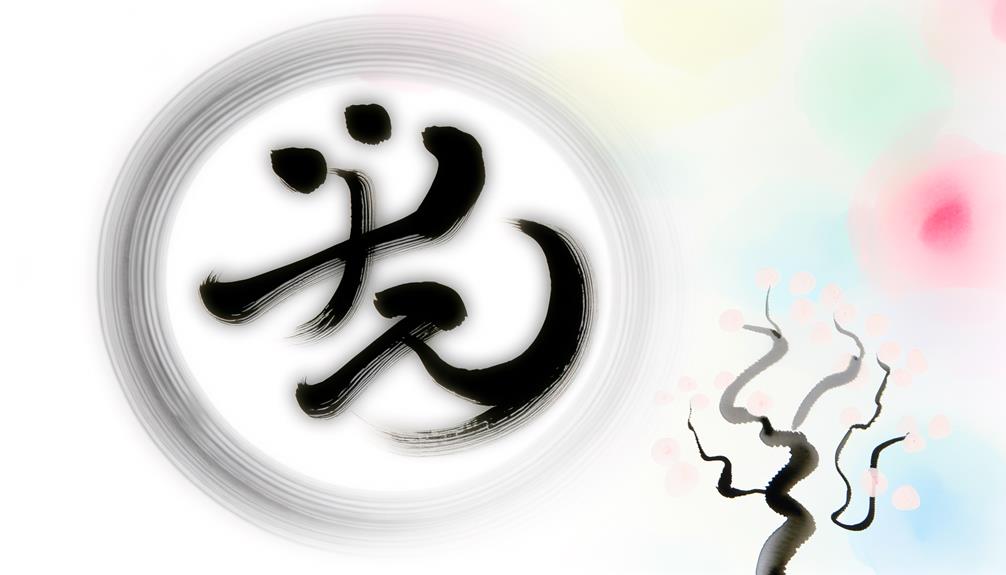
In contemporary society, the Chinese character 和 (hé) has transcended traditional boundaries, finding its place in a myriad of modern contexts, from corporate branding to social media. This symbol seamlessly integrates into various sectors, reflecting peace and harmony in diverse applications.
| Modern Context | Example Usage |
|---|---|
| Corporate Branding | Logos, mission statements |
| Social Media | Hashtags, emojis |
| Fashion Industry | Apparel designs, accessories |
| Home Decor | Wall art, furniture |
| Education | School mottos, programs |
Corporations utilize 和 (hé) to embody harmonious business practices, while social media platforms leverage it to promote peaceful interactions. The fashion industry incorporates the character into designs, resonating with consumers seeking tranquility. In home decor, it symbolizes a serene living environment. Ultimately, educational institutions adopt it to foster a culture of peace.
Incorporating the Symbol
Incorporating the Chinese symbol 和 (hé) into various facets of life requires a nuanced understanding of its cultural significance and aesthetic versatility. This symbol, embodying peace and harmony, can be seamlessly integrated across diverse contexts to enrich both personal and communal environments.
Below are some sophisticated applications:
- Interior Design: Incorporate the symbol into home décor to foster a tranquil atmosphere.
- Art and Calligraphy: Use the symbol in artworks to convey a message of peace and cultural depth.
- Corporate Logos: Embed the symbol to reflect organizational values of harmony and cooperation.
- Jewelry: Create pieces that symbolize personal peace and balance.
- Gardens: Design Zen gardens featuring the symbol to enhance a sense of serenity and mindfulness.
These applications not only enhance aesthetic appeal but also imbue spaces with profound cultural resonance.
Personal Practice

Incorporating the Chinese symbol for peace into personal practice can enhance one’s spiritual and mental well-being to a great extent.
Daily meditation techniques, mindful breathing exercises, and peaceful visualization practices are effective methods to internalize the essence of this symbol.
These practices not only foster a deeper connection to the cultural significance of the symbol but also promote a harmonious inner state.
Daily Meditation Techniques
Achieving a state of inner peace through daily meditation techniques requires a disciplined approach that integrates elements of mindfulness, controlled breathing, and focused intention. Regular practice can enhance mental clarity, emotional stability, and overall well-being. These techniques, rooted in ancient traditions, offer timeless benefits pertinent to modern life.
- Mindfulness Meditation: Cultivating present-moment awareness to reduce stress and enhance mental focus.
- Guided Visualization: Employing mental imagery to evoke a state of relaxation and mental tranquility.
- Mantra Meditation: Repeating a word or phrase to aid concentration and foster inner peace.
- Body Scan: Progressively focusing on different body parts to release tension and promote relaxation.
- Zen Meditation (Zazen): Practicing seated meditation to achieve insight and calm through disciplined posture and mental focus.
Incorporate these techniques consistently to cultivate profound inner tranquility.
Mindful Breathing Exercises
Mindful breathing exercises, integral to many meditative practices, require focused attention on the breath to foster mental clarity and emotional equilibrium. These exercises, rooted in ancient traditions such as Zen Buddhism and Taoism, involve consciously regulating inhalation and exhalation patterns. Practitioners often use techniques like diaphragmatic breathing or alternate nostril breathing to deepen relaxation and enhance mindfulness.
Peaceful Visualization Practices
Building on the foundation of mindful breathing, peaceful visualization practices offer another profound method for cultivating inner peace and emotional balance. These practices employ the power of mental imagery to evoke sensations of tranquility and harmony, deeply rooted in ancient Chinese traditions.
Key visualization practices include:
- Nature scenes: Envisioning serene landscapes such as mountains, rivers, or gardens.
- Symbolic imagery: Focusing on symbols like the Chinese character for peace.
- Guided visualizations: Following an expert’s voice to imagine calming scenarios.
- Color therapy: Visualizing calming colors such as blue or green to soothe the mind.
- Positive affirmations: Mentally repeating peaceful phrases while visualizing tranquil scenes.
These methods, when practiced regularly, can enhance mental clarity and emotional well-being.
Symbol in Literature
In Chinese literature, the symbol for peace (和平) frequently emerges as a nuanced motif, embodying both historical resonance and philosophical depth.
This ideogram is not merely an abstract concept but a reflection of millennia-old aspirations for societal harmony and personal tranquility.
From classical poetry to contemporary novels, 和平 often symbolizes the ideal state of existence, transcending political turmoil and personal strife.
Renowned works like ‘Dream of the Red Chamber’ and ‘Journey to the West’ incorporate this emblem to explore the delicate balance between chaos and order.
Therefore, the peace symbol in Chinese literature serves as a profound commentary on the human condition, urging readers to contemplate the perpetual quest for inner and outer harmony.
Finding Inner Peace
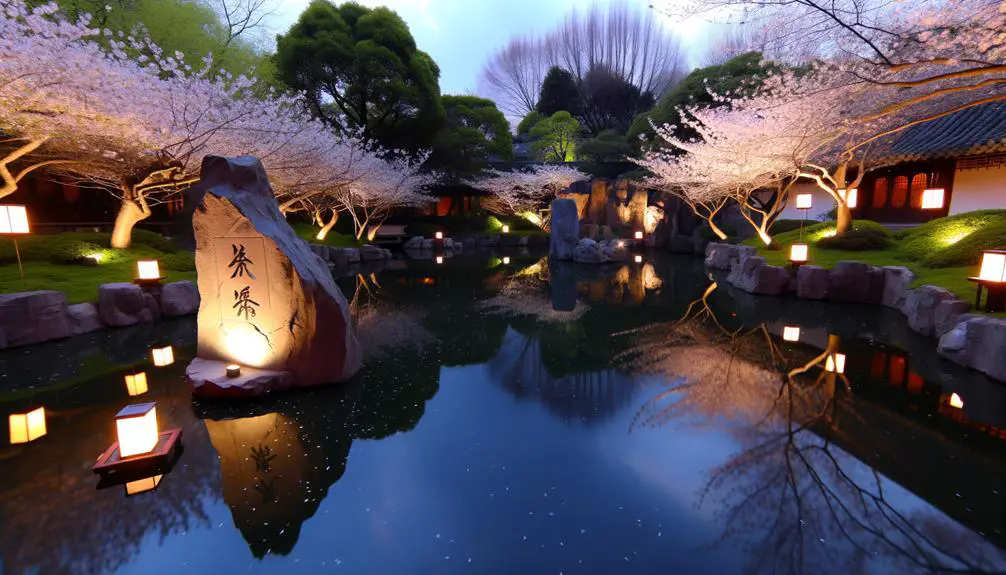
Exploring the symbol for peace in Chinese literature naturally leads to a broader examination of how individuals can achieve inner peace, an ideal deeply embedded in Chinese philosophy and cultural practices. Inner peace is often attained through various practices and philosophical tenets that have been developed over millennia.
- Meditation (禪, Chán): Promotes mindfulness and mental tranquility.
- Tai Chi (太极): Harmonizes body and mind through fluid movements.
- Confucian Ethics (儒家伦理): Encourages moral rectitude and social harmony.
- Daoist Simplicity (道家): Advocates living in harmony with nature.
- Calligraphy (书法): Integrates artistic expression with meditative practice.
These practices underscore a holistic approach to achieving balance and serenity, reflecting the depth and richness of Chinese cultural heritage.
Conclusion
The Chinese symbol for peace is a profound emblem rooted in ancient history and rich cultural significance. It transcends mere linguistic representation, embodying the essence of tranquility and balance.
Like a masterful brushstroke on a timeless canvas, it weaves through philosophical foundations and literary expressions, guiding individuals towards personal serenity.
This symbol, a beacon of harmony, continues to inspire and illuminate pathways to inner peace, resonating deeply within the collective human spirit.

